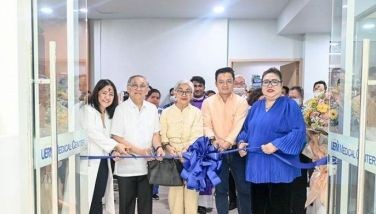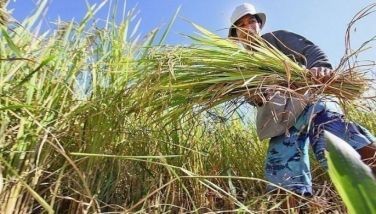Agrarian reform cuts poverty — Habito
December 17, 2006 | 12:00am
Will Filipino farmers be better off after the land acquisition and distribution program of the Department of Agrarian Reform (DAR)?
Former National Economic and Development Authority (NEDA) Director-General Cielito F. Habito said agrarian reform has reduced poverty through the redistribution, land market regulation (tenure reform) and support services.
This he said during the conference on Comprehensive Agrarian Reform Program (CARP) entitled "CARP: Scenario and Options for Future Development, sponsored by the DAR in partnership with the German Technical Cooperation (GTZ).
Habito, now with the Ateneo Center for Economic Research and Development said that "based on the findings of the impact studies on CARP, agrarian reform beneficiaries (ARBs) are now earning better compared to other farmers. He was the head of the NEDA during the administration of former Pres. Fidel V. Ramos.
He reported that the average land productivity among agrarian reform beneficiaries which is pegged at P20,430 per hectare, is much higher than the P8,032 per hectare of the non-ARBs.
With development intervention from DAR, the ARBs also invested more at an average of P15,752 per hectare than the non-ARBs. Their average income which is P97,844/year is 23 percent higher than the P75,787 average of the non-ARB income.
The overall findings shows that at least 78 percent of ARB households have access to potable water while 76 were provided sanitary toilets.
Meanwhile, experts of agrarian reform favored a "clean break" scenario for future development in the implementation of agrarian reform. The scenario predicted better economic opportunity for the Filipino farmers with the completion of land tenure improvement and delivery of agrarian cases by 2008. It showed that the shift in support services will focus on the provision of more entrepreneurship and community program to the farmers.
The "sprint to the line" scenario was also considered by the study team, which focuses on land equity and support services through infrastructure projects.
The clean break scenario was envisioned in the Medium Term Philippines Development Plan (MTDP) and the Ten-Point Agenda of the Arroyo Administration. The MTDP promotes agribusiness enterprises and the creation of agro-industrial zones to ensure economic stability and food security.
Former National Economic and Development Authority (NEDA) Director-General Cielito F. Habito said agrarian reform has reduced poverty through the redistribution, land market regulation (tenure reform) and support services.
This he said during the conference on Comprehensive Agrarian Reform Program (CARP) entitled "CARP: Scenario and Options for Future Development, sponsored by the DAR in partnership with the German Technical Cooperation (GTZ).
Habito, now with the Ateneo Center for Economic Research and Development said that "based on the findings of the impact studies on CARP, agrarian reform beneficiaries (ARBs) are now earning better compared to other farmers. He was the head of the NEDA during the administration of former Pres. Fidel V. Ramos.
He reported that the average land productivity among agrarian reform beneficiaries which is pegged at P20,430 per hectare, is much higher than the P8,032 per hectare of the non-ARBs.
With development intervention from DAR, the ARBs also invested more at an average of P15,752 per hectare than the non-ARBs. Their average income which is P97,844/year is 23 percent higher than the P75,787 average of the non-ARB income.
The overall findings shows that at least 78 percent of ARB households have access to potable water while 76 were provided sanitary toilets.
Meanwhile, experts of agrarian reform favored a "clean break" scenario for future development in the implementation of agrarian reform. The scenario predicted better economic opportunity for the Filipino farmers with the completion of land tenure improvement and delivery of agrarian cases by 2008. It showed that the shift in support services will focus on the provision of more entrepreneurship and community program to the farmers.
The "sprint to the line" scenario was also considered by the study team, which focuses on land equity and support services through infrastructure projects.
The clean break scenario was envisioned in the Medium Term Philippines Development Plan (MTDP) and the Ten-Point Agenda of the Arroyo Administration. The MTDP promotes agribusiness enterprises and the creation of agro-industrial zones to ensure economic stability and food security.
BrandSpace Articles
<
>
- Latest
Latest
Latest
June 9, 2024 - 5:55pm
By Alberto Peña | June 9, 2024 - 5:55pm
May 24, 2024 - 10:00am
May 24, 2024 - 10:00am
May 14, 2024 - 3:43pm
By Ian Laqui | May 14, 2024 - 3:43pm
April 10, 2024 - 5:12pm
By Ian Laqui | April 10, 2024 - 5:12pm
March 4, 2024 - 3:32pm
By Ian Laqui | March 4, 2024 - 3:32pm
Recommended


























